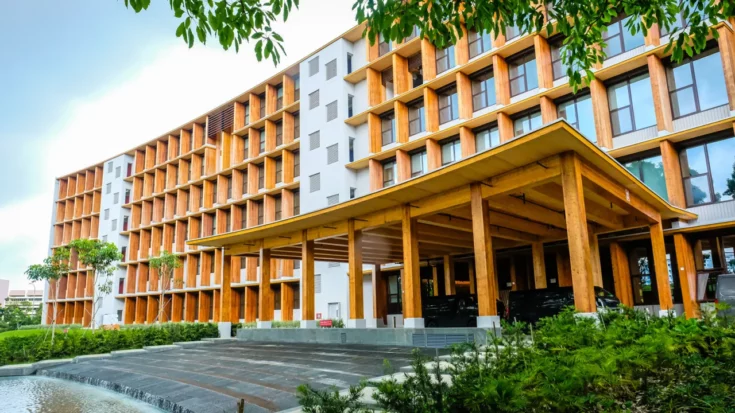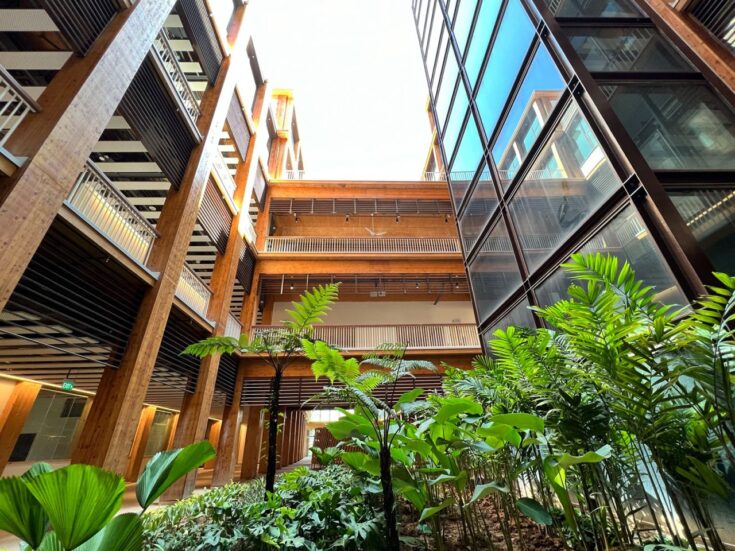
A new six-story college campus building, Nanyang Technological University’s (NTU) business school, is Singapore’s latest ode to nature.
Everything from handrails to benches, door frames to room dividers, are built using timber harvested from spruce trees in Austria, Sweden and Finland.
The wood was prefabricated into panels and heavy-duty beams in Europe before being shipped to Singapore.
Singapore as the Garden City
Singapore has billed itself as a “Garden City.” A term coined in the 1960s by the country’s founding father and former prime minister, Lee Kuan Yew. The city has long embarked on extensive tree-planting programs and embraced so-called “biophilic” architecture.
Spreading across 43,500 square meters, Gaia, as the building is called, is now Asia’s largest timber building, by floor area.
The project opened in May, 2023 and cost 125 million Singapore dollars ($93 million) to build. Its exposed timber frame is free from cladding or paint. A deliberate design decision to celebrate natural materials while giving visitors the feeling of walking between trees.
“I always try to envision a connection with nature, such as trees and water, in my designs,” Toyo Ito, the architect behind the project, said.
Ito was awarded the Pritzker Prize (dubbed the “Nobel” of architecture) in 2013. He designed Gaia alongside Singaporean design firm RSP. It features a 190-seat auditorium, a dozen lecture theaters, as well as research facilities, faculty offices and airy study terraces.

Asian attitude is changing
The number of large-scale wooden structures being built around the world has increased rapidly in recent years. Asia have been slower to embrace the trend than Europe and North America. But Ito believes attitudes are changing in Asia, adding: “Singapore is especially quick to make these things a reality.”
Many of the alleged benefits of mass timber are environmental.
Around 40% of the world’s energy consumption is attributed to the construction and operation of buildings. But unlike concrete and steel, trees absorb carbon dioxide throughout their lifetime. Studies suggest that one cubic meter of wood can store about a ton of carbon dioxide.
Timber is also a natural insulator that, in warm places like Singapore, traps less heat than concrete, while reducing heat loss in colder climates.
While Gaia’s designers say they have not calculated the emissions saved during the construction process, they claim that the structure produces 2,500 fewer metric tons of carbon dioxide than concrete or steel counterparts. This makes an annual saving equivalent to taking over 550 cars off the roads.
The country’s authorities have designated Gaia as a “zero energy” building, that with the help of rooftop solar panels, produces as much energy as it consumes. To date, just 16 structures in Singapore have achieved this distinction.
Source: cnnstyle.com
